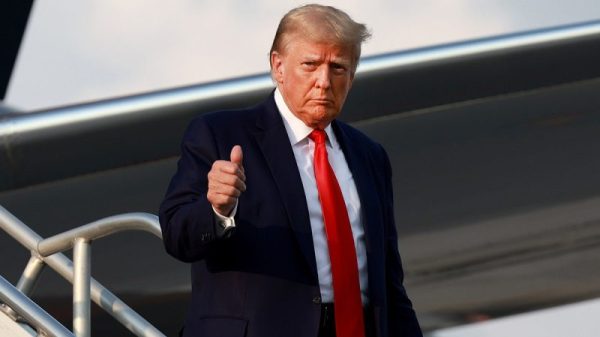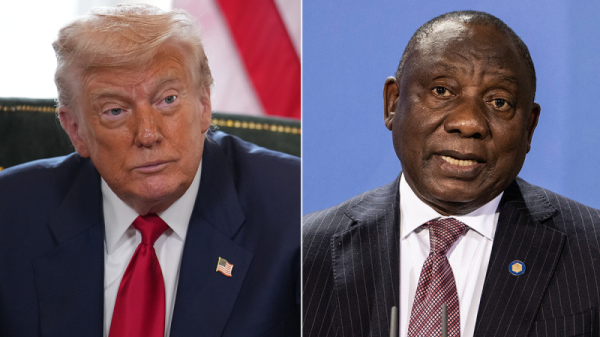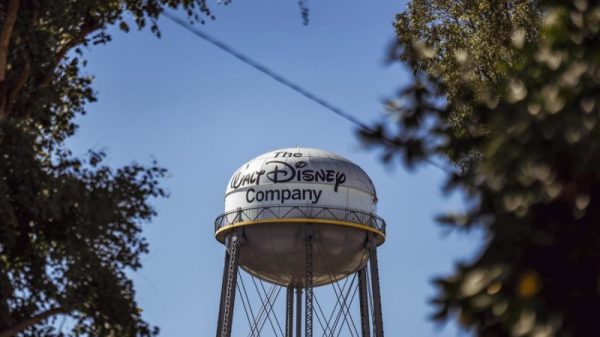A federal judge on Wednesday ordered Texas to reposition floating barriers the state placed in the middle of the Rio Grande, rebuking one of the more contentious elements of Gov. Greg Abbott’s effort to deter illegal border crossings.
The preliminary injunction granted by Judge David A. Ezra sided with the U.S. Justice Department, which filed a lawsuit in July arguing Texas had no authority to install a 1,000-foot-long segment of the spiked orange buoys in the river, an international waterway where the federal government has jurisdiction.
Ezra, a Reagan appointee, gave Texas until Sept. 15 to relocate the floating barrier to the U.S. side of the riverbank, in coordination with the U.S. Army Corps of Engineers.
“Texas’s conduct irreparably harms the public safety, navigation, and the operations of federal agency officials in and around the Rio Grande,” Ezra wrote in the order, adding that Texas will be required to cover the cost of moving the barriers.
Abbott (R) installed the barriers near the town of Eagle Pass as part of Operation Lone Star, his $4 billion state campaign to fortify the border with National Guard troops, concertina wire and other obstacles to illegal crossings. Texas officials said they planned to install floating barriers up and down the river, whose serpentine path spans about two-thirds the length of the U.S.-Mexico border.
Construction activity in the river channel is highly regulated and governed by international treaties between the United States and Mexico over issues such as water rights and engineering projects that could affect the river’s flow.
Texas did not apply for federal approval to put barriers in the middle of the river, an act that Abbott characterized as a matter of state sovereignty.
Last month, state officials had to move the barriers closer to the U.S. side of the river after Mexican officials pointed out that most of the buoys had floated over to their side. The Mexican government has also objected to Texas’s placement of the barriers along the international boundary.
“Governor Abbott announced that he was not ‘asking for permission’ for Operation Lone Star, the anti-immigration program under which Texas constructed the floating barrier,” Ezra wrote in the order. “Unfortunately for Texas, permission is exactly what federal law requires before installing obstructions in the nation’s navigable waters.”
Abbott’s office said in a statement that it would appeal the ruling.
“Our battle to defend Texas’ sovereign authority to protect lives from the chaos caused by President Biden’s open border policies has only begun,” the statement said. “Texas is prepared to take this fight all the way to the U.S. Supreme Court.”
A federal judge on Wednesday ordered Texas to reposition floating barriers the state placed in the middle of the Rio Grande, rebuking one of the more contentious elements of Gov. Greg Abbott’s effort to deter illegal border crossings.
The preliminary injunction granted by Judge David A. Ezra sided with the U.S. Justice Department, which filed a lawsuit in July arguing Texas had no authority to install a 1,000-foot-long segment of the spiked orange buoys in the river, an international waterway where the federal government has jurisdiction.
Ezra, a Reagan appointee, gave Texas until Sept. 15 to relocate the floating barrier to the U.S. side of the riverbank, in coordination with the U.S. Army Corps of Engineers.
“Texas’s conduct irreparably harms the public safety, navigation, and the operations of federal agency officials in and around the Rio Grande,” Ezra wrote in the order, adding that Texas will be required to cover the cost of moving the barriers.
Abbott (R) installed the barriers near the town of Eagle Pass as part of Operation Lone Star, his $4 billion state campaign to fortify the border with National Guard troops, concertina wire and other obstacles to illegal crossings. Texas officials said they planned to install floating barriers up and down the river, whose serpentine path spans about two-thirds the length of the U.S.-Mexico border.
Construction activity in the river channel is highly regulated and governed by international treaties between the United States and Mexico over issues such as water rights and engineering projects that could affect the river’s flow.
Texas did not apply for federal approval to put barriers in the middle of the river, an act that Abbott characterized as a matter of state sovereignty.
Last month, state officials had to move the barriers closer to the U.S. side of the river after Mexican officials pointed out that most of the buoys had floated over to their side. The Mexican government has also objected to Texas’s placement of the barriers along the international boundary.
“Governor Abbott announced that he was not ‘asking for permission’ for Operation Lone Star, the anti-immigration program under which Texas constructed the floating barrier,” Ezra wrote in the order. “Unfortunately for Texas, permission is exactly what federal law requires before installing obstructions in the nation’s navigable waters.”
Abbott’s office said in a statement that it would appeal the ruling.
“Our battle to defend Texas’ sovereign authority to protect lives from the chaos caused by President Biden’s open border policies has only begun,” the statement said. “Texas is prepared to take this fight all the way to the U.S. Supreme Court.”





















